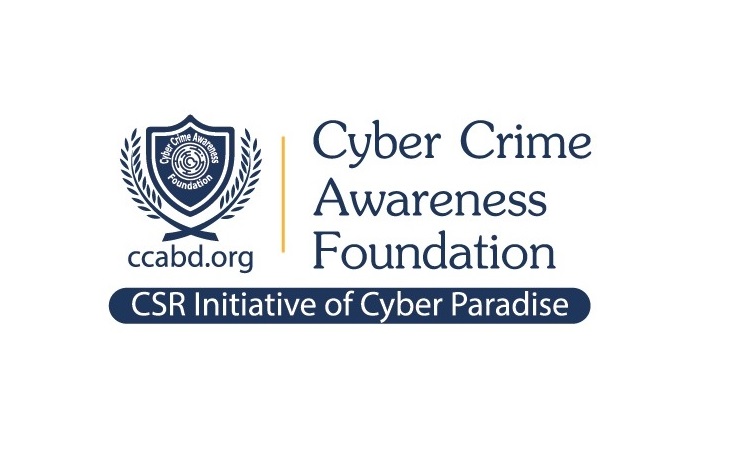:: Engr. Md. Mushfiqur Rahman ::
While it may be used in many different ways online and elsewhere, the term digital banking, essentially, combines online and mobile banking services under one umbrella. Moreover Digital Banking is the automation of traditional banking services. Digital banking enables a bank’s customers to access banking products and services via an electronic/online platform. Digital banking means digitizing all of the banking operations and substituting the bank’s physical presence with an everlasting online presence, eliminating a consumer’s need to visit a branch.
A visual equation that sums up (literally) digital banking:
Online Banking + Mobile Banking = Digital Banking
Digital Banking Can be offered by
Digital banking can be offered by two primary sources: brick-and-mortar banks and credit unions, and Proposed digital banks. Neither source is better than the other. Instead, some consumers may find one to be a better fit than the other for their needs.
For customers who appreciate the ability to stop by a branch to perform some of their banking functions, brick-and-mortar banks and credit unions are the natural choices for their bank accounts. These traditional banking institutions also usually offer online access and a proprietary mobile app to make everyday banking functions as accessible as possible for their customers.
Online banks can take various forms, all of which challenge the high fee, low yield brick-and-mortar banking model. In some cases, they may be affiliated with a traditional brick-and-mortar bank, serving as its online division. Or they may operate solely online. More recent fintech iterations have included what are referred to as neobanks or challenger banks.
The majority of these online banks offer slimmed-down banking functions, low- to no-fee structures and higher-than-average interest rates in exchange for no in-person branch experience. With a more streamlined, online and mobile-only product offering, these banks can reduce operational costs and help more people access banking services, a potentially vast benefit to the under banked and unbanked communities.
A digital bank represents a virtual process that includes online banking and beyond. As an end-to-end platform, digital banking must encompass the front end that consumers see, back end that bankers see through their servers and admin control panels and the middleware that connects these nodes. Ultimately, a digital bank should facilitate all functional levels of banking on all service delivery platforms. In other words, it should have all the same functions as a head office, branch office, online service, bank cards, ATM and point-of-sale (POS) machines.
The reason digital banking is more than just a mobile or online platform is that it includes middleware solutions. Middleware is software that bridges operating systems or databases with other applications. Financial industry departments such as risk management, product development and marketing must also be included in the middle and back end to truly be considered a complete digital bank. Financial institutions must be at the forefront of the latest technology to ensure security and compliance with government regulations.
Digital Bank Opportunity
Advancing to a more technologically sophisticated way of doing things, it goes without saying that the benefits long outweigh the costs. Similarly, digital banking as a technological by-product aims to make life easier for the customers of a bank. Digital banking has the following benefits:
- Digital banking means you’re not beholden to bank hours to manage your finances. Digital banking enables consumers to perform banking functions from the comfort of their homes, be it an elderly person who is tired of waiting in lines or a working-class professional who is caught up with work, or a regular person who does not want to visit the bank’s branch to run a single task. It also offers convenience.
- Better rates and lower fees. With online banks driving fees down, consumers have choices beyond their local brick-and-mortar financial institutions. It’s easy to compare rates and fee structures to find the best bank for your needs.
- Digital bank will help to onboard under banked and unbanked communities of the country. This inclusion will take most contribution in total economy and enhance the employment as well help to grow up new entrepreneurs.
- Unbanked money flow in banking channels which help increase micro savers profit
- Digitalization ensure the Operational efficiency
- Customer onboard automation and digitalize product ensure profit maximization
- Back office automation minimize operating cost
- Elaborating on the convenience offered, digital banking lets a user carry out banking work around the clock, with 24*7 availability of access to banking functions.
- Banking will be paperless with the development of digital banking as a service. This paperless approach will help the environment as green environment, user can log into their account at any point in time to monitor their transactional records.
- Digital banking allows a user to set up automatic payments for regular utility bills such as electricity, gas, phone, and credit cards. The customer no longer has to make a conscious effort of remembering the due dates. The customer can opt for alerts on upcoming payments and outstanding dues.
- Online shopping has become a runaway with payment channels becoming well-integrated with online shopping portals. Mobile apps has significantly contributed to online payments.
- Digital banking extending services to remote areas is seemingly a step toward holistic development. With smartphones at affordable prices and internet access in remote areas, the rural population can make the most out of digital banking services.
- Digital banking-enabled fund transfers reduce the risk of forged currency.
- With the help of digital banking, a user can report and block misplaced credit cards at the click of a button. This benefit greatly strengthens the privacy and security available to a bank’s customers.
- By promoting a cashless society, digital banking restricts the circulation of black money as the Government can keep a track of fund movements. In the long run, digital banking is expected to lower the minting demands of a currency.
- Personalized services: Digital banks offer users informational and engaging content – financial options, educational resources, and interactive tools.
- Restricts the circulation of black money
Digital banking payments types
| 1. Customer Onboarding
2. Ekyc 3. Different Deposit products 4. Digitalize process in investment/Loan processing 5. Digitalize analysis of customer financial transaction status 6. Digitalization of Budgeting and Planning for customer financial Management 7. Timely notifications and alerts 8. Split payment 9. QR Code Integration 10. Banking cards 11. Management of virtual cards 12. Payments through contactless technology 13. Analytics-based dashboards 14. Unstructured Supplementary Service Data (USSD 15. Unified Payments Interface (UPI): 16. Mobile Wallets: 17. PoS terminals: 18. Internet and Mobile Banking:
|
19. ATM
20. Fingerprint 21. Obtain Bank Statement 22. Transfer of Funds 23. Bill Payment 24. Finance Management 25. Monitor Transaction record 26. Cheque Management 27. Cash withdrwal 28. Option to order currency (Debit Pool)/ Money request 29. Customizable standing options 30. Accounts linked to tax exemptions status 31. Card blocking feature 32. Innovation toward safety vaults 33. Integration with stock market investment channels 34. Financial management analytics 35. Enable grouping of accounts of different banks 36. Easily accessible assistance |
Digital Bank Challenges
- Innovation is the key success factor for Digital banking
- Customer centricity: Higher digital engagement of customer
- Cyber Threats in Digital Banking: While digital banking highly convenient and easy to access, in the meantime it has also challenges. The management of the digital bank need to consider the confidentiality, integrity, availability, authentication, nonrepudiation and logging of all activities and services. Since digital environment are prone to vulnerabilities and hacks such as phishing, pharming, identity theft, and keylogging, banking institutions are investing a lot in their security systems. Security is at the forefront when considering a service such as digital banking. If security were to be compromised, banks would lose a crucial selling factor, and more so than risking user data and resources, banking institutions cannot afford negative publicity.
- Risk and compliance: digital banking process need to have compliant and regulatory technologies for ensuring security, fraud management and terrorist financing.
- Downtime. If you rely solely on an online bank, you could be challenged to access your accounts should your bank experience an online or mobile app outage and there’s no branch for you to visit instead.
- Learning curve. For those who aren’t tech-savvy, online banking and mobile banking apps might be a bit much to digest.
- Security. There’s always the chance that your username and password could be hacked; however, online banks pursue the same degree of risk-reducing security protections, such as multi-factor authentication, as brick-and-mortar banks do.
- Information Technologies: most of the technology solutions i.e: Database Management Systems, Operating Systems, Business Applications, Regulatory Technologies, NGFW, DLP, Antimalware, Sandbox, Routing, Switching, SIEM, SOAR, Virtualizations etc… which are using by the banks and may will use by the proposed digital banks will be out sourced due to the lakings of technology products are not home grown. These scenario is creating vulnerabilities and security risks for the financial institutions. In this regard the technology architecture need to design in defensive approach as “Security during Design”. The design must be follow in a way so the systems logs, telemetry or metadata in any form not to travel cloud which are outside of Bangladesh Geo Location.
- Challenges regarding Human Resources Banks need to hire people by observing commitment and professional track record who have skill and knowledge about the defensive architecture regarding IT infrastructure, software development, information security and governance phases. End user and customer awareness including the strong professional, ethical skills and commitment of the IT professionals those are working in Bank Information Technology and information security department
- Banks need to consider home grown Functional Consultants, Security Testers, Information Security and Risk Assessor and consulting companies rather than outside the country for ensuring privacy and security of data as well as infrastructure information.
Though there are challenges I hope we will be able to overcome challenges for achieving the objectives and growth of our beloved motherland, following approach organizations may consider for the security good Digital hygiene:
- The Bangladesh Bank has circulated different circulars related with ICT, Cyber Security and guidelines i.e. ICT Security guideline, Cloud Computing Guideline, Core Banking Software Guideline must strictly follow since inception of the digital bank for ensuring good governance.
- Design Defensive architecture
- Design, Develop, Implement, Maintain the Software Security
- Business Application Software, SOC solutions Monitoring Tools and Technology Solutions Development
- Concentrate on Bespoke and customize software Development
- Academy and entrepreneur need invest to build people and solutions
- Avoid using public networks and devices to access digital banking – if you must use a public device, remember to clear cache and browsing data. It is good practice to not allow the browser to save your username and password for bank details.
- Banks never ask for confidential information so refrain from sharing it with anyone who asks for it.
- Anti-virus-protected systems offer another layer of security to your systems.
- The URL address MUST begin with ‘https’, or a padlock must appear next to the website address. The padlock is a security certificate. The address bar turns green when the site is secured with an SSL certificate, which is an additional validation for the security of the website. Therefore, use the bank’s URL and refrain from clicking on other links. Banks generally use minimum SSL/128-bit encryption.
- Lastly, disconnect from the internet when the system is left idle.
- Inform fraud team for further action.
- Investigate any suspicious previous activity related to the stolen account.
- Make sure multi-factor authentication mechanisms are in place.
- Configure Regular Scans and Monitor Settings.
- Always update all systems i.e.: Operating System, NGFW, DB, Application Software etc…
- Make sure endpoint protection mechanisms are performing well against the latest malware campaigns
- Detect the stolen credentials ASAP and revoke them
- Determine the workstation/access location by using IP, OS, logs, etc. information
Writer, Engr. Md. Mushfiqur Rahman, Chief Information Technology Officer (CITO), First Security Islami Bank Limited












